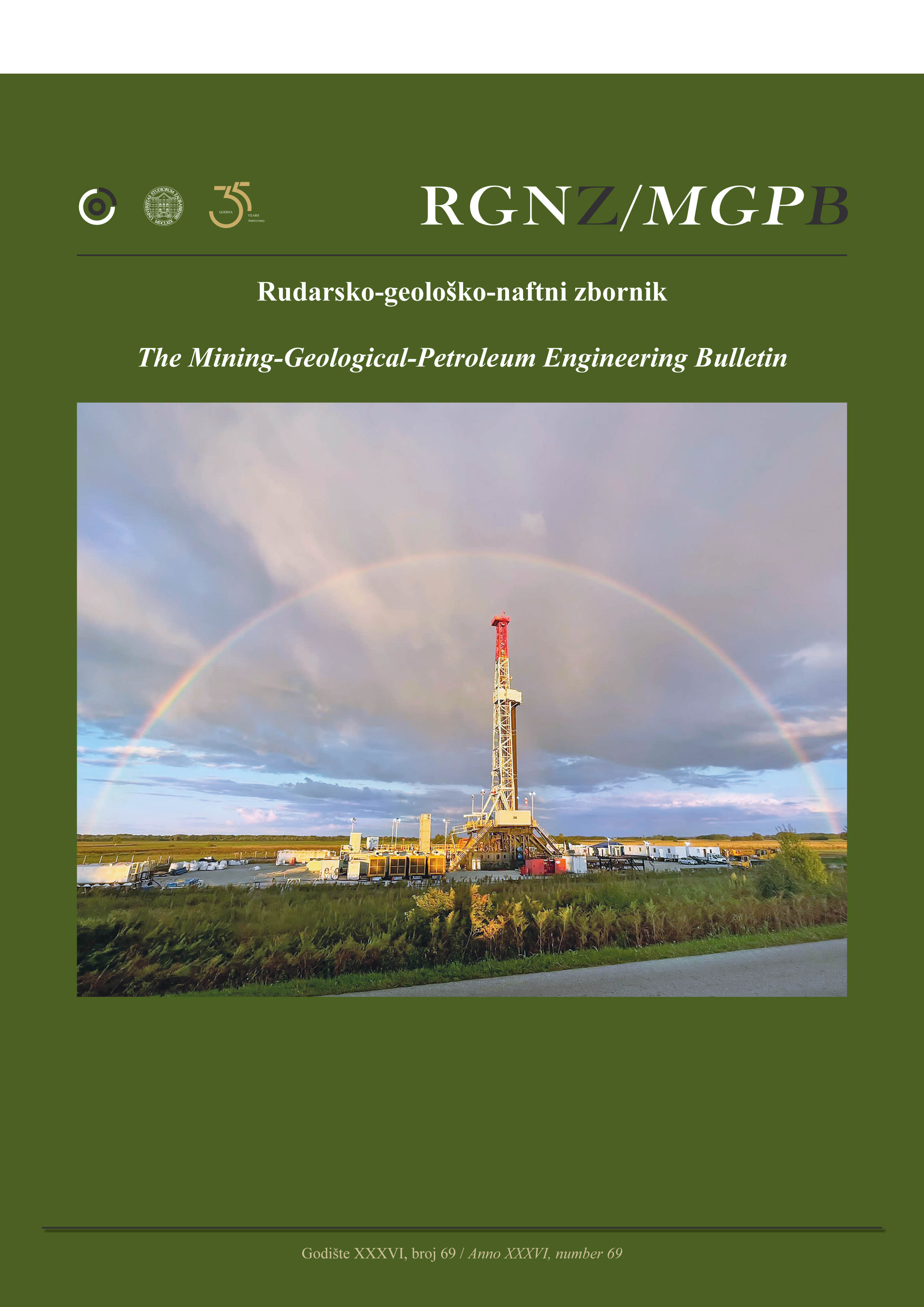Knowledge Driven methods for Cu-Au Porphyry Potential Modelling; a case study of the Mokhtaran area, Eastern Iran
DOI:
https://doi.org/10.17794/rgn.2024.3.10Keywords:
AHP, MOORA, VIKOR, Mokhtaran, PorphyryAbstract
Current research investigates multi-criteria decision methods, consisting of AHP TOPSIS, AHP VIKOR and AHP MOORA, to model porphyry copper potential in the Mokhtaran area in Eastern Iran. Evidential layers in this study include intrusive rocks, volcanic rocks, faults, Geochemical mineralization probability index (GMPI), reduction to the magnetic pole of the total magnetic intensity map, argillic and phyllic alterations. The importance of these evidential layers was calculated using the AHP method. Then, a fuzzy method was applied to the same scale the evidential layers. The threshold values of these layers were discretized with the Fractal method. Then, a weight was assigned to each evidential layer. After weighing all of the evidential layers, different MCDM methods, including AHP TOPSIS, AHP VIKOR, and AHP MOORA, were implemented to combine these layers and outline the Porphyry Copper Prospectivity Models. The predicted models show the same promising areas. The appropriate coincidence can be seen between high potential areas and mine indications. Then the success curve rate was implemented to compare the three predicted models. Based on this method, the AHP TOPSIS has a better performance. Since the success rate curve belongs to AHP TOPSIS, it is placed above the other two methods. Next, AHP VIKOR has a better performance than AHP MOORA. The three MCDM methods produced the same Cu porphyry mineralization areasd along fault zones.
Downloads
Published
How to Cite
Issue
Section
License
Copyright (c) 2024 Moslem Jahantigh, Hamidreza Ramazi

This work is licensed under a Creative Commons Attribution 4.0 International License.
Creative Commons-BY
Authors who publish with this journal agree to the following terms:
In agreeing this form, you certify that:
- You read the ethical codex of the RGN zbornik available at journal web.
- You submitted work is your original work, and has not previously been published and does not include any form of plagiarism.
- You own copyright in the submitted work, and are therefore permitted to assign the licence to publish to RGN zbornik.
- Your submitted work contains no violation of any existing copyright or other third party right or any material of an obscene, libellous or otherwise unlawful nature.
- You have obtained permission for and acknowledged the source of any illustrations, diagrams or other material included in the work of which you are not the copyright owner.
- You have taken due care to ensure the accuracy of the work, and that, to the best of your knowledge, there are no false statements made within it.
- All co-authors of this submitted work are aware of, and in agreement with, the terms of this licence and that the submitted manuscript has been approved by these authors.
Publication licence
You retain copyright in your submitted work, according to journal license policy (CC-BY). By signing this form you agree that RGN zbornik may publish it under the publication licence. In summary the licence allows the following:
Anyone is free:
- To copy, distribute, display, and perform the work.
- To make derivative works.
Under the following conditions:
- The original author must always be given credit.
- The work may not be used for commercial purposes.
- If the work is altered, transformed, or built upon, the resulting work may only be distributed under a licence identical to this one.
Exceptions to the licence
In addition to publishing the work printed under the above licence, RGN zbornik will also enable the work to be visible online.
The journal editorial can change the licence rules anytime but it cannot retroactively restrict author(s) rights.


